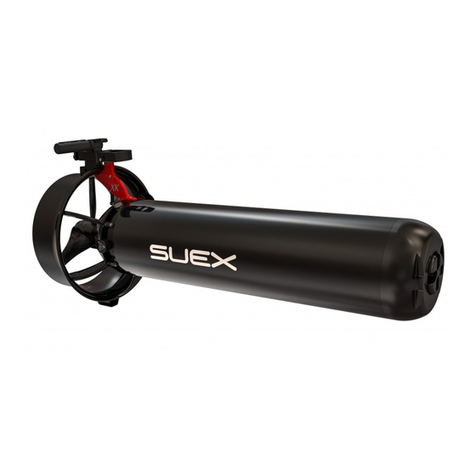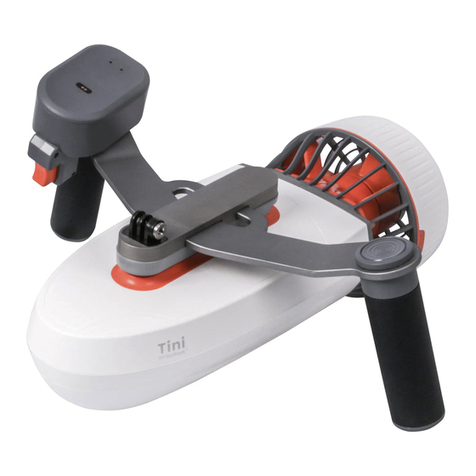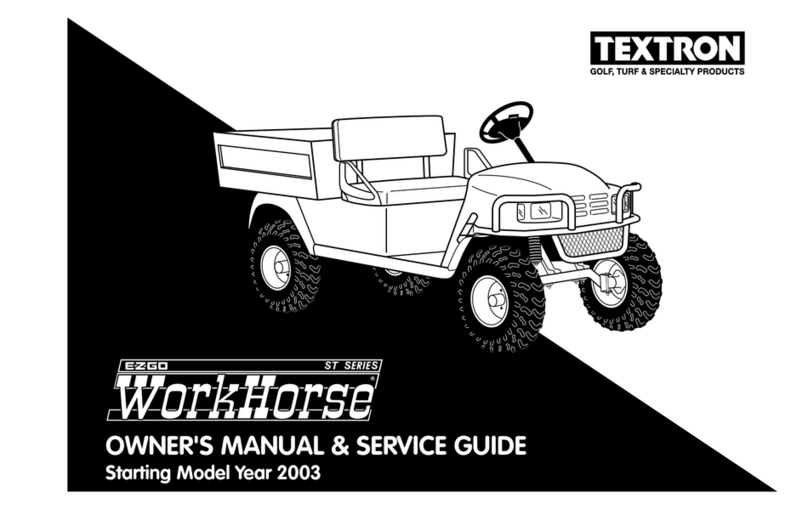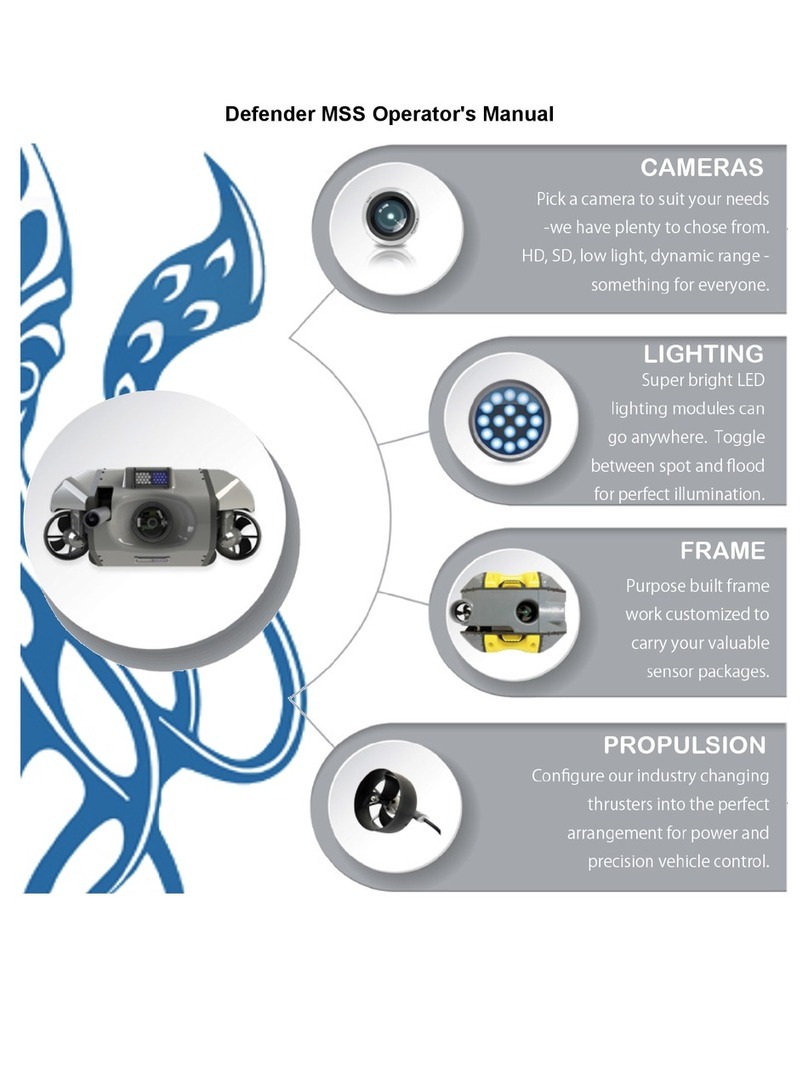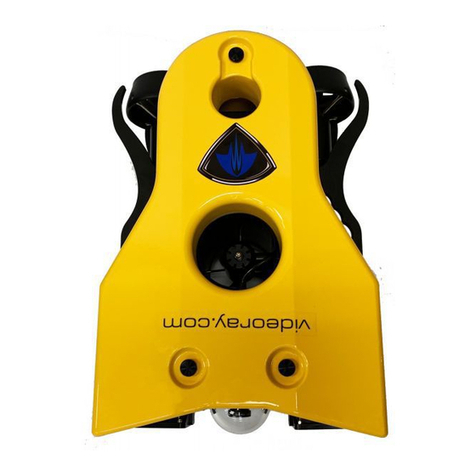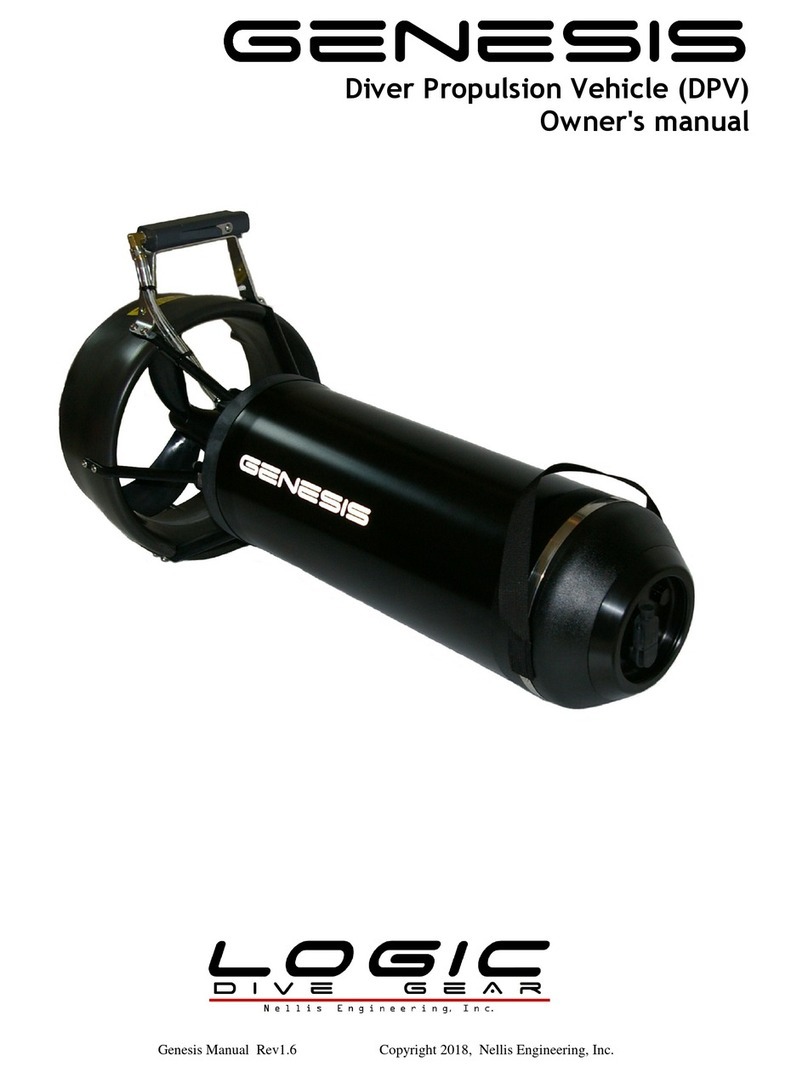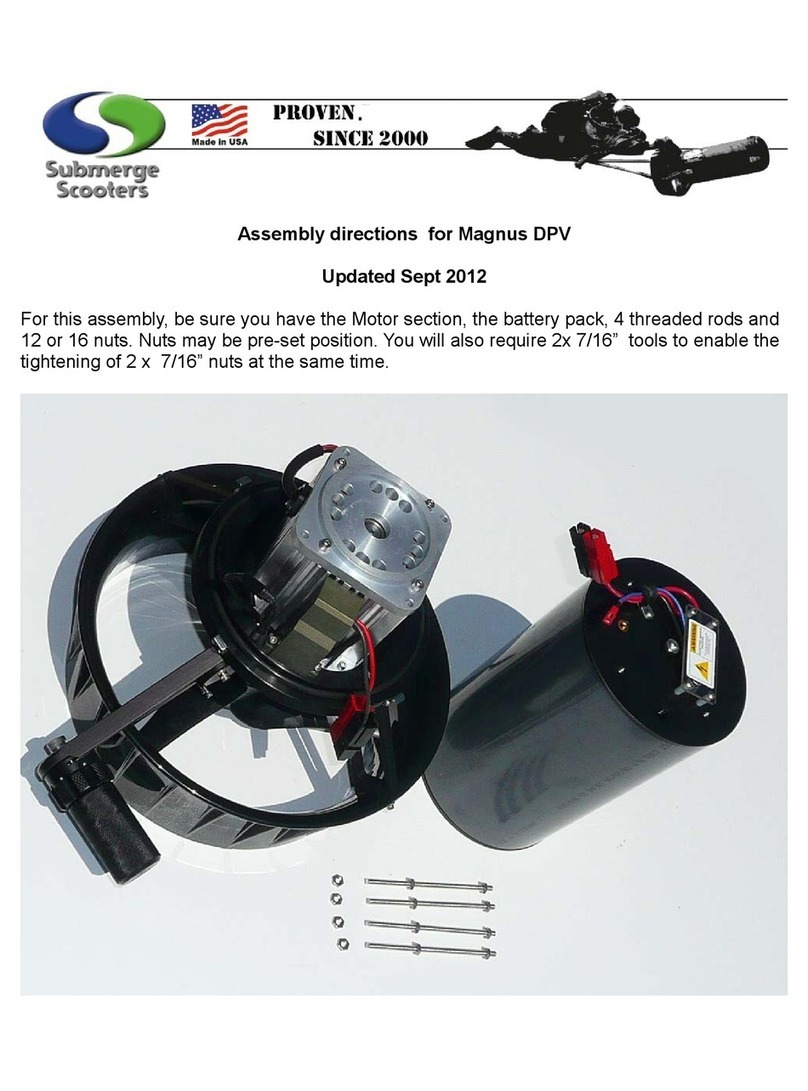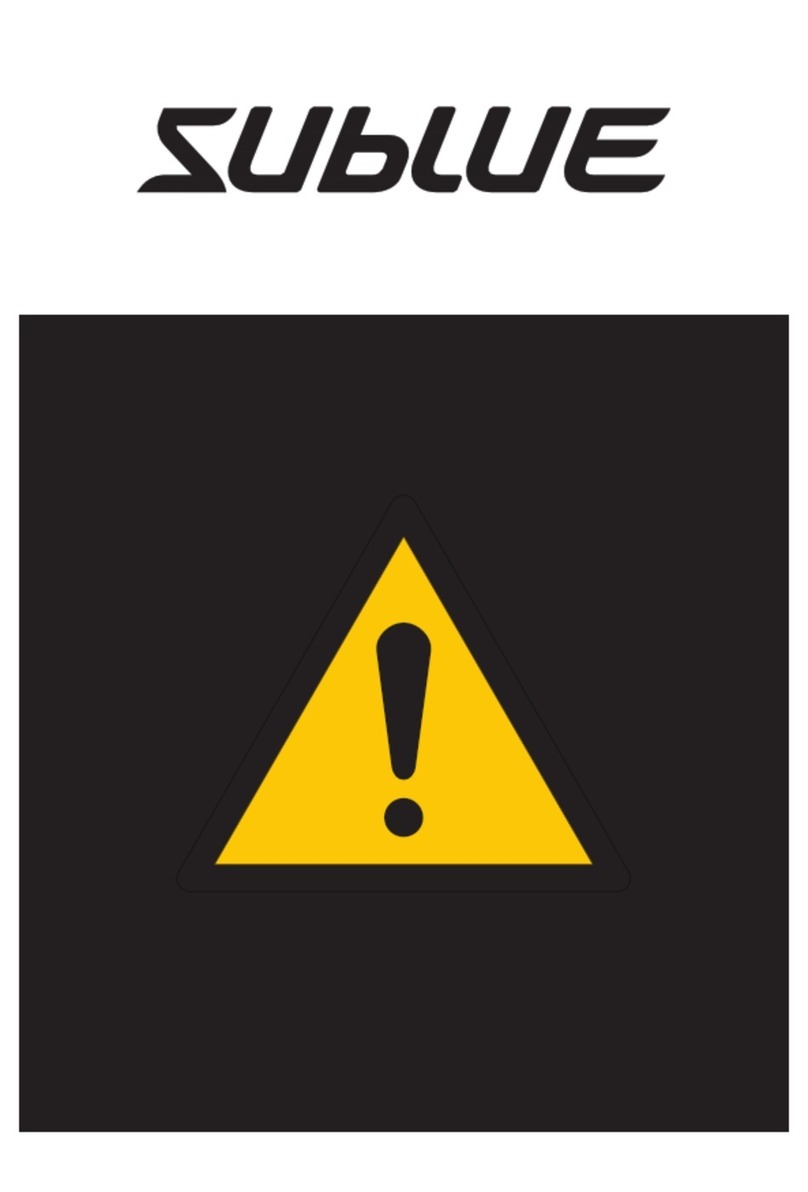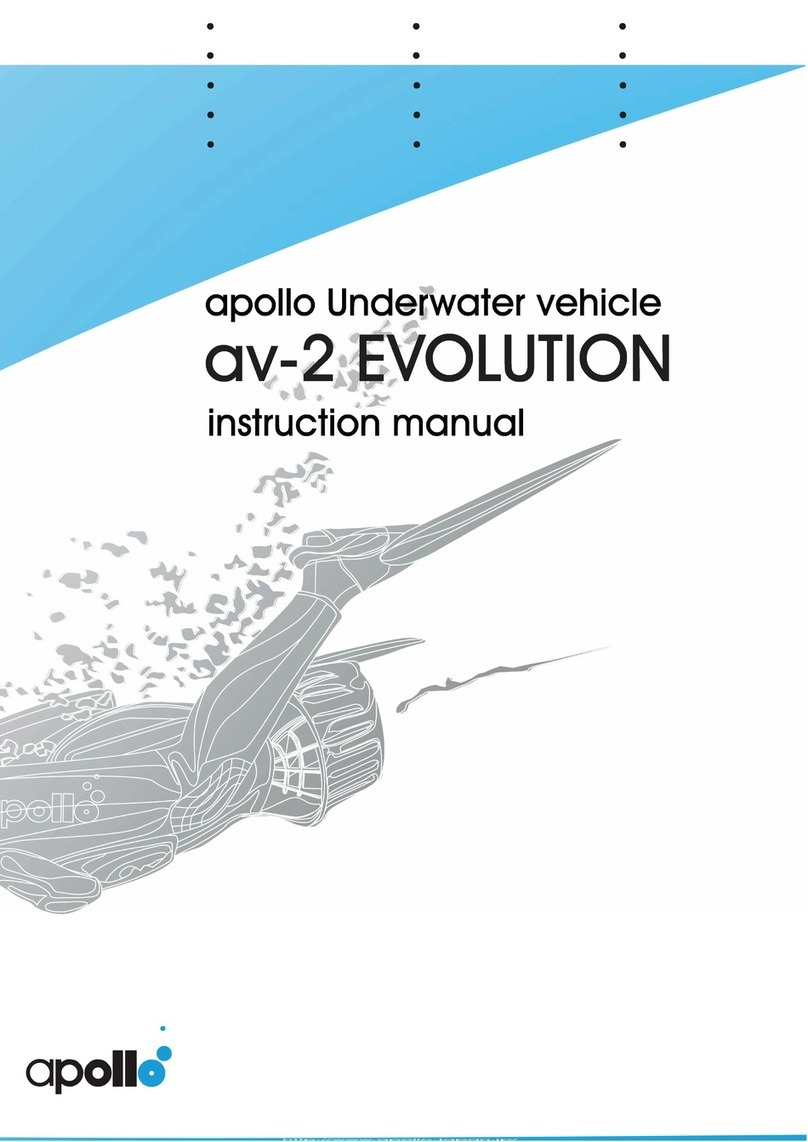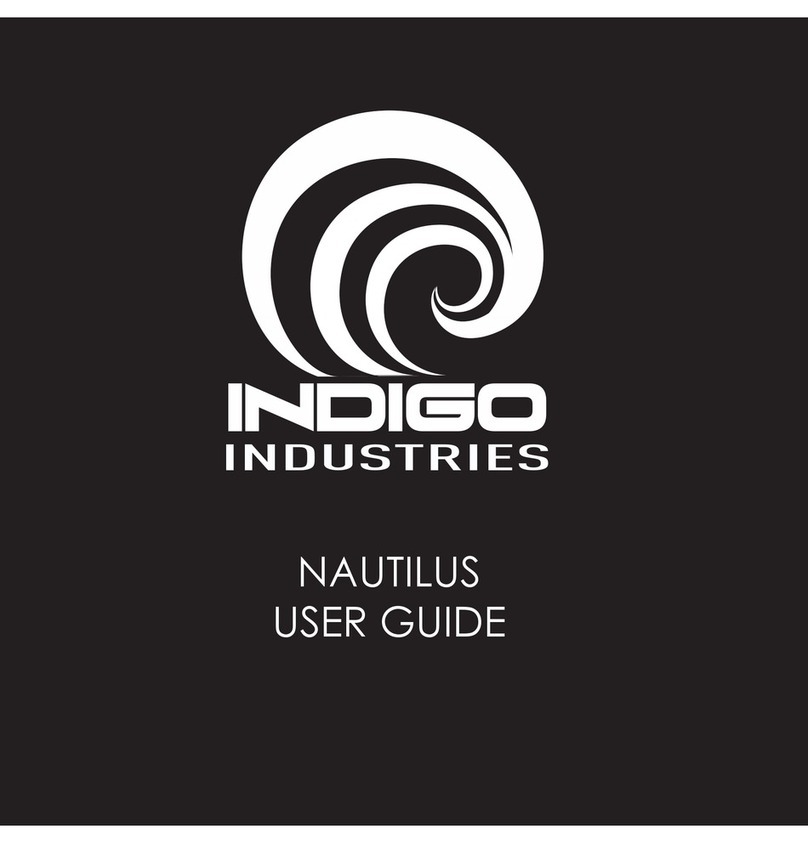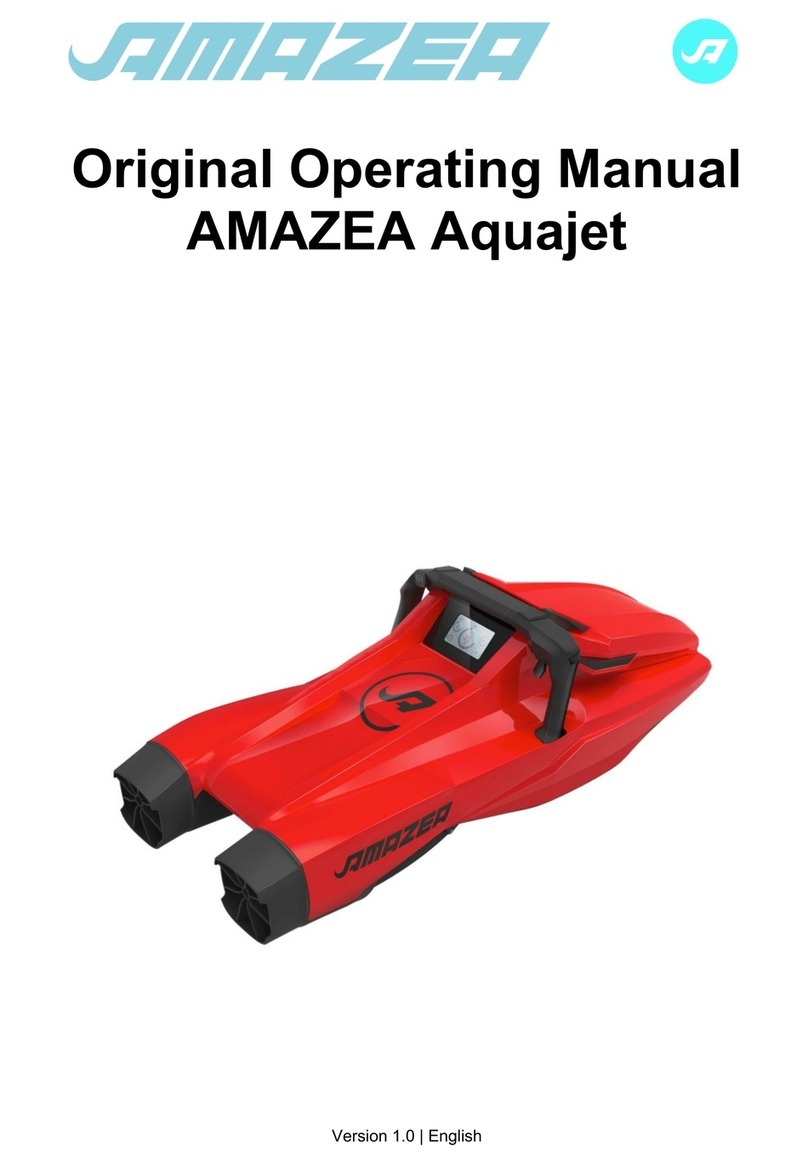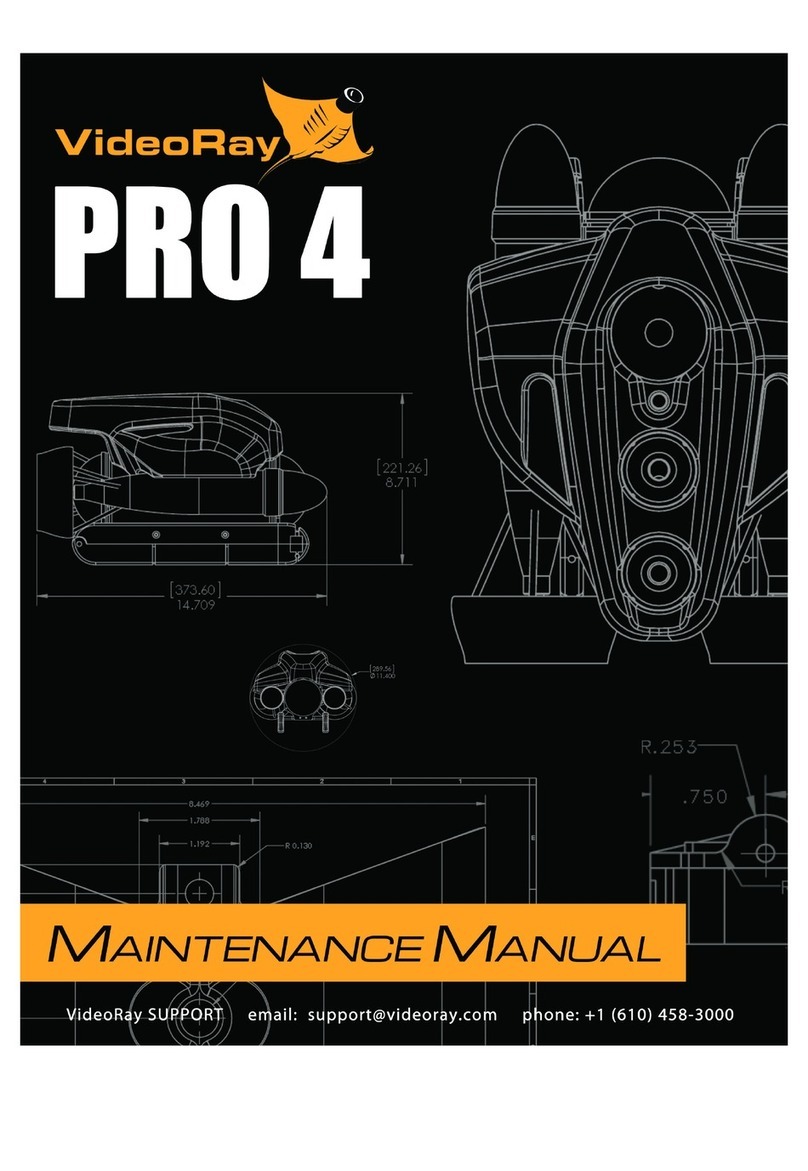The above-mentioned table does not mention all prevention matters that could cause danger and injury.
Please carefully read and follow the instructions whenever you see the " " symbol in this book.
CAUTION
CAUTION
CAUTION
CAUTION
CAUTION
CAUTION
CAUTION
CAUTION
CAUTION
CAUTION
CAUTION
WARNING
WARNING
WARNING
WARNING
WARNING
WARNING
ە
ࠉ
ࠉ
ࠉ
ࠉ
ࠉ
ࠉ
ە
ࠉ
ە
ࠉ
ࠉ
ࠉ
ە
ࠉ
ە
ࠉ
ࠉ
ە
ࠉ
Please only use our purpose-built battery and purpose-built
charger.
Please do not change, remodel or disassemble.
Please do not touch the electrodes etc.
Please do not jump into water with the scooter.
Please ensure that string, hose, hair or foreign objects do not
become entangled in the propeller. Remove the battery
before attempting to disentangle any items should the
propeller become obstructed.
Please do not throw the scooter from a high place.
Please execute a thorough check prior to use.
Please do not run the scooter for more than five seconds out
of water.
Please disconnect the battery terminal when the scooter is
not in use.
Please check the main body O-rings for impurity and dust
before usage.
Please do not use other than the specified silicone grease
lubricant supplied by Nippon Sensuiki.
Please take careful note of your surroundings and
circumstances prior to preparing your equipment on land
and in the water.
Please do not enter with the scooter when you are boat diving.
Have the scooter passed down to you.
If your scooter has stopped abnormally or been for repair
please do not run it for a long distance until after you have
confirmed it is safe.
Please do not drive the scooter to the surface as there are
dangers caused by rapid ascent.
Please only charge the battery in a well-ventilated area and
keep it away from an open flame.
Otherwise there is a danger of an explosion and fire.
There is danger of injury.
There is a possibility of injury.
The inertia and weight of the scooter is dangerous and could
cause injury.
Hydrogen gas is generated from the battery while charging.
There are possibilities of poisoning and fire.
The inertia and weight of the scooter is dangerous and could
cause injury.
The inertia and weight of the scooter is dangerous and could
cause injury.
An unknown fault or unfinished repair may cause an unexpected
accident.
An accident may be caused by a malfunction after it enters the
water.
The seal part on the propeller shaft is damaged by frictional
heat, and there is a possibility of water leakage.
Damage may be caused to the materials the scooter is made
from by using lubricants other than what Nippon Sensuiki Co.,
Ltd. supply. This in turn may cause an unexpected accident.
Equipment and materials may be damaged by unexpected
operation.
Unexpected operation due to the switch being accidentally
operated may cause an unexpected accident.
There is a possibility of water leakage by imperfect sealing,
which may cause damage and an unexpected accident.
There is danger of electric shock because of high currents and
voltage.
There are dangers of the explosions and of fire if the electric
circuit is tampered with. There are dangers of damage and
water leaks in the body and circuits.
The rapid pressure decrease associated with a rapid ascent
may cause decompression disease or embolism.
Please do not touch unnecessarily any moving parts
(especially the propeller).
